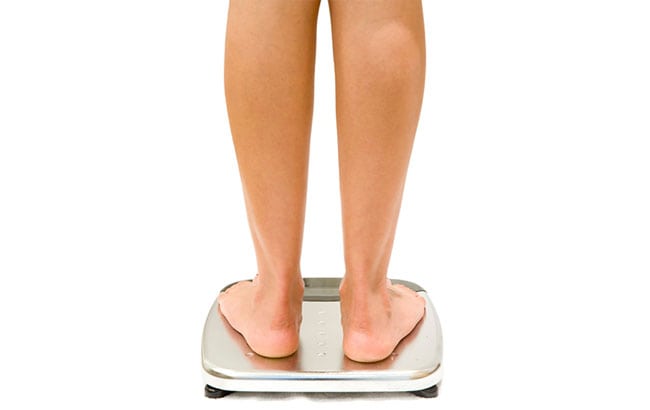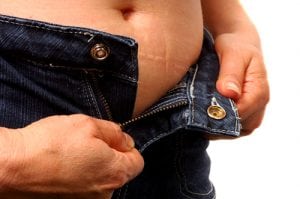
Learn about how weight loss programs that encompass surgery can help you to meet your goals.
For many people who have a body mass index (BMI) of more than 30, diet and exercise are simply not enough to lose their excess body weight. When a person has tried a variety of calorie-limiting diets and exercise plans without success, surgery-based weight loss programs may be the solution to losing the weight and keeping it off permanently.
- If you are thinking of a weight loss program that includes surgery, you will meet with a weight loss surgery specialist and participate in several tests and evaluations
- After the physician determines that you are a candidate for a surgery-based weight loss program, you and the doctor will consider which one of the procedures would be the best choice given your BMI, lifestyle and other factors
Roux-en-Y Gastric Bypass
In the Roux-en-Y gastric surgical bypass, your doctor surgically creates a small pouch at the upper portion of your stomach. The tiny pouch is the only part of your stomach that will be able to accept food from your esophagus. The creation of the small pouch drastically limits the amount that you can eat or drink in one sitting. The pouch will hold about 2 ounces of food or beverage. Once the pouch is created, the surgeon cuts the small intestine from below the larger portion of the stomach and reattaches it to the pouch. A portion remains connected to the bottom of the stomach. This allows the majority of your digestive enzymes to drain through your intestines rather than digesting your food. As a result, you take in fewer calories and absorb less of the calories that you do consume. This is a highly effective procedure for weight loss and has a 60 to 80 percent effectiveness rate.
Laparoscopic Adjustable Gastric Banding
 In the laparoscopic adjustable gastric band surgery, which is often simply referred to as gastric banding, a flexible band is placed around the upper section of the stomach. The band is enveloped by an inflatable balloon. When the balloon is inflated with a saline solution, the band constricts. The constriction of the band results in the formation of a small pouch that can hold around 2 ounces of food or drink. The rest of the stomach stays in place. No procedure is done on the intestines, which means that the digestive process continues as normal. A small port is placed under the skin of your stomach. A thin, flexible tube connects the port to the band. Your doctor can inject or remove saline solution from the balloon, which expands or constricts the band to make your stomach larger or smaller. Adjustment of the band is done to hasten or slow weight loss. You will still be able to digest your food as normal, you will just eat less food overall.
In the laparoscopic adjustable gastric band surgery, which is often simply referred to as gastric banding, a flexible band is placed around the upper section of the stomach. The band is enveloped by an inflatable balloon. When the balloon is inflated with a saline solution, the band constricts. The constriction of the band results in the formation of a small pouch that can hold around 2 ounces of food or drink. The rest of the stomach stays in place. No procedure is done on the intestines, which means that the digestive process continues as normal. A small port is placed under the skin of your stomach. A thin, flexible tube connects the port to the band. Your doctor can inject or remove saline solution from the balloon, which expands or constricts the band to make your stomach larger or smaller. Adjustment of the band is done to hasten or slow weight loss. You will still be able to digest your food as normal, you will just eat less food overall.
Sleeve Gastrectomy
With the sleeve gastrectomy, part of your stomach is removed. You are left with a much smaller stomach that is formed into a long, thin tube. This new shape is designed reduce the production of appetite-stimulating hormones such as ghrelin. Because of this, you may have a smaller appetite and fewer food cravings. Your smaller stomach cannot hold as much food, which helps to decrease the amount of food that you take in during a snack or meal. Your intestines remain in their natural configuration. This allows the food that you do eat to be fully absorbed. You will continue to reap all of the nutritional benefits of the food that you eat, so your dietary choices after a sleeve gastrectomy will be important. The sleeve gastrectomy is a permanent, non-reversible procedure.
Biliopancreatic Diversion With a Duodenal Switch
 The first part of the biliopancreatic diversion with a duodenal switch is the same as the sleeve gastrectomy. A large portion of your stomach is removed. The duodenal valve and duodenum are left intact at the bottom of your smaller stomach. The middle part of your small intestine is closed off and the last segment is surgically attached to the duodenum, completing the switch. In the second part of the procedure, the separated middle section of your small intestine is reattached to the end of your intestine. This facilitates the drainage of bile and pancreatic enzymes away from the stomach, resulting in the biliopancreatic diversion. Diverting these digestive juices means that your small intestine absorbs less of the nutrients and calories that you consume. Together, the smaller stomach and reduced caloric absorption facilitate weight loss. This procedure may also help to improve other weight-related medical conditions such as diabetes, although results vary.
The first part of the biliopancreatic diversion with a duodenal switch is the same as the sleeve gastrectomy. A large portion of your stomach is removed. The duodenal valve and duodenum are left intact at the bottom of your smaller stomach. The middle part of your small intestine is closed off and the last segment is surgically attached to the duodenum, completing the switch. In the second part of the procedure, the separated middle section of your small intestine is reattached to the end of your intestine. This facilitates the drainage of bile and pancreatic enzymes away from the stomach, resulting in the biliopancreatic diversion. Diverting these digestive juices means that your small intestine absorbs less of the nutrients and calories that you consume. Together, the smaller stomach and reduced caloric absorption facilitate weight loss. This procedure may also help to improve other weight-related medical conditions such as diabetes, although results vary.
To learn more about weight loss programs, contact our office today.

